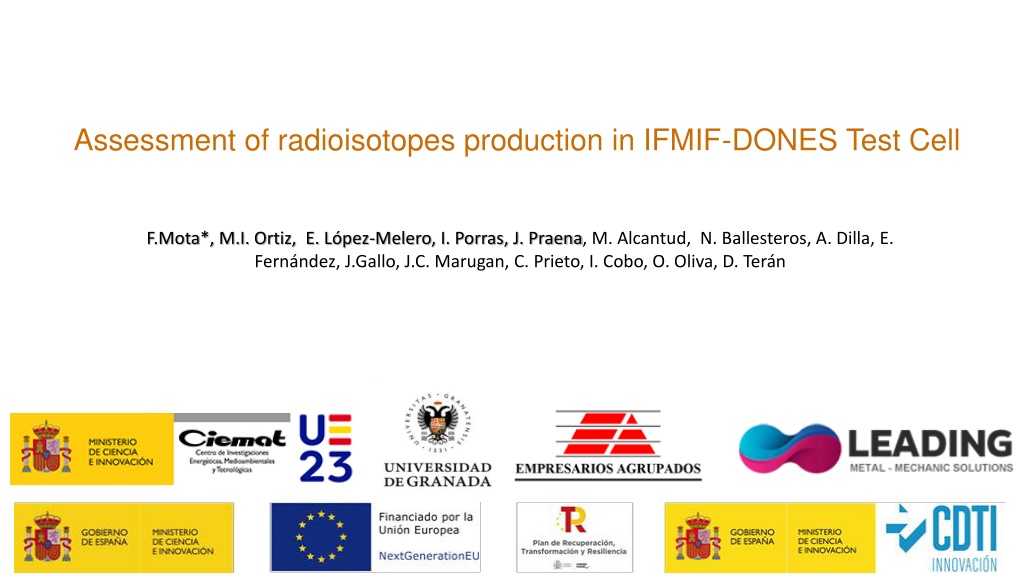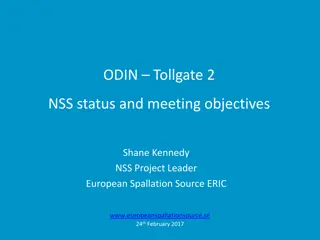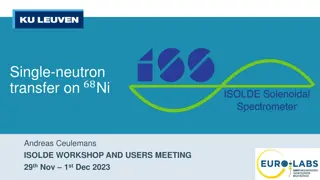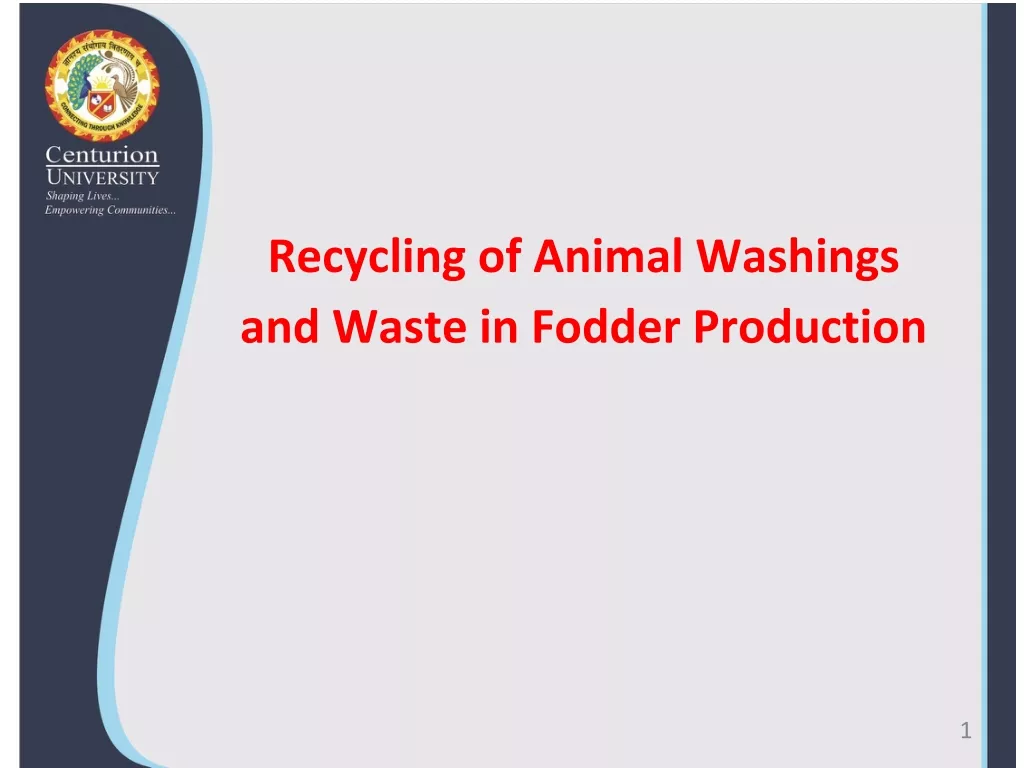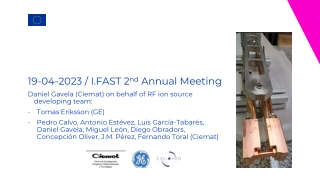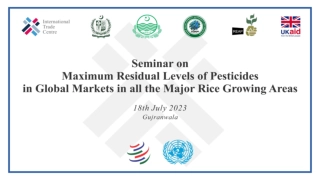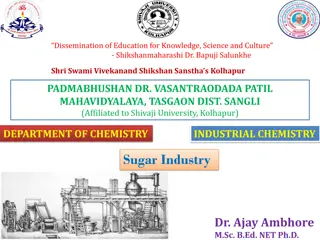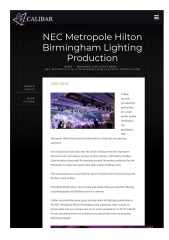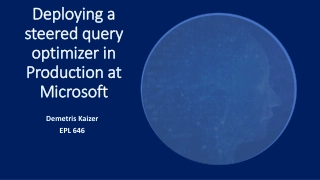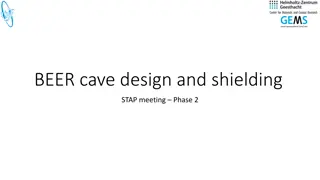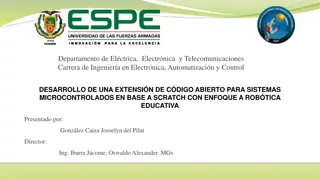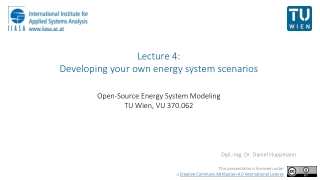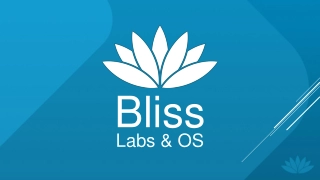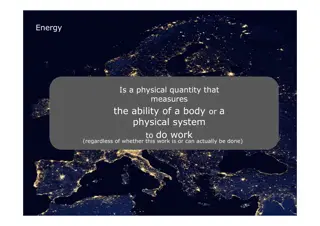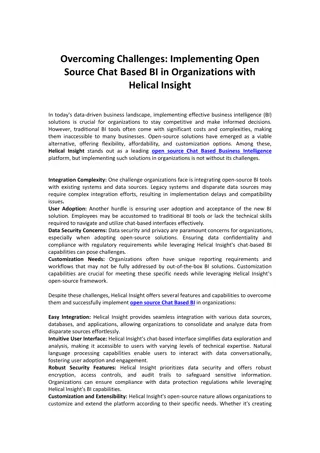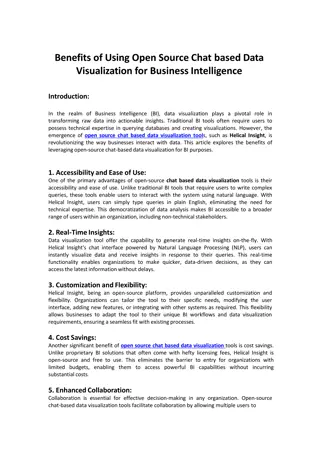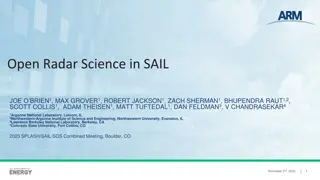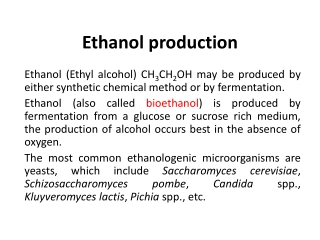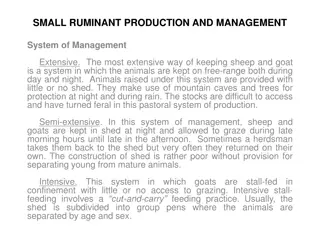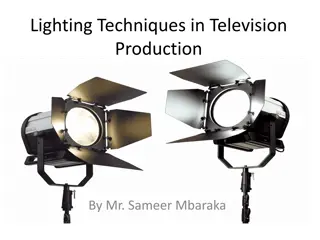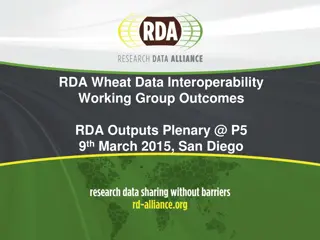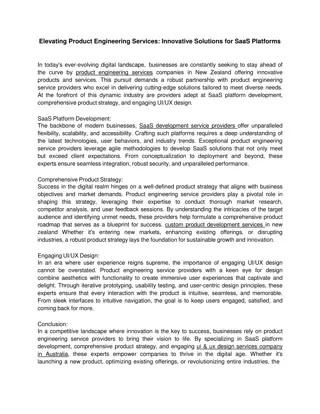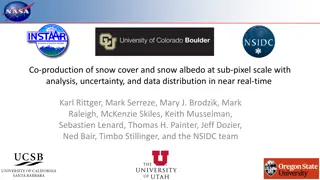Innovative Approach to Radioisotope Production Using IFMIF-DONES Neutron Source
An assessment on the production of radioisotopes in the IFMIF-DONES test cell highlights the significance of 99Mo, the precursor of Technetium-99m used in radiopharmaceutical applications. The global shortage of 99Mo due to reactor maintenance issues has led to the exploration of alternative methods such as direct irradiation of Molybdenum. The IFMIF-DONES neutron source offers a promising solution with unique features for enhanced imaging and reduced patient radiation dose, presenting a potential shift from conventional production methods. The study delves into the necessity, challenges, and proposals for efficient radioisotope production in the medical field.
Innovative Approach to Radioisotope Production Using IFMIF-DONES Neutron Source
PowerPoint presentation about 'Innovative Approach to Radioisotope Production Using IFMIF-DONES Neutron Source'. This presentation describes the topic on An assessment on the production of radioisotopes in the IFMIF-DONES test cell highlights the significance of 99Mo, the precursor of Technetium-99m used in radiopharmaceutical applications. The global shortage of 99Mo due to reactor maintenance issues has led to the exploration of alternative methods such as direct irradiation of Molybdenum. The IFMIF-DONES neutron source offers a promising solution with unique features for enhanced imaging and reduced patient radiation dose, presenting a potential shift from conventional production methods. The study delves into the necessity, challenges, and proposals for efficient radioisotope production in the medical field.. Download this presentation absolutely free.
Presentation Transcript
Assessment of radioisotopes production in IFMIF-DONES Test Cell F.Mota*, M.I. Ortiz, E. L pez-Melero, I. Porras, J. Praena, M. Alcantud, N. Ballesteros, A. Dilla, E. Fern ndez, J.Gallo, J.C. Marugan, C. Prieto, I. Cobo, O. Oliva, D. Ter n
Index 1. Why use IFMIF-DONES for Radioisotope production 2. Assessment of the 99Mo production in IFMIF-DONES 3. High level requirements of the RadioIsotope Production Device (RIPD) 4. Proposals of concepts design for the RIPD 99Mo assessment production considering the first RIPD mockups 5. 6. Radioisotope production device vs Neutron Spectral Shifter 7. Conclusions and Future works
Index 1. Why use IFMIF-DONES for Radioisotope production 2. Assessment of the 99Mo production in IFMIF-DONES 3. High level requirements of the RadioIsotope Production Device (RIPD) 4. Proposals of concepts design for the RIPD 99Mo assessment production considering the first RIPD mockups 5. 6. Radioisotope production device vs Neutron Spectral Shifter 7. Conclusions and Future works
Why use IFMIF-DONES for Radioisotope production 99Mo is the precursor of Technetium-99m (99mTc), which is used for radiopharmaceutical applications on 99m 99mTc are Tc are used Radiopharmaceuticals Radiopharmaceuticals based procedures per year, accounting for about 85% of all nuclear medicine procedures per year, accounting for about 85% of all nuclear medicine diagnostics diagnostics based on used in more in more than 30 million than 30 million 99m 99mTc are Tc are used to its short half to its short half- -life T1/2 (6 h) and the 140 life T1/2 (6 h) and the 140 keV used in Single Photon Emission Computed Tomography (SPECT) Thanks in Single Photon Emission Computed Tomography (SPECT) Thanks keV - -ray emission ray emission Ideal features for imaging and low radiation dose to the patient Ideal features for imaging and low radiation dose to the patient 99Mo is currently produced in nuclear fission reactors as a by-product of 235U fission. However, a global shortage of99Mo emerged in the late 2000s because of the frequent shut down due to extended maintenance periods of the main reactors for99Mo production: NRU Chalk River Reactor (Canada) and the High Flux Reactor (HFR) at Petten (The Netherlands).
Why use IFMIF-DONES for Radioisotope production An alternative of235U fission method is to irradiate directly Molybdenum to produce99Mo. It is produced by two ways the98Mo(n, )99Mo and100Mo(n,2n)99Mo reactions. However the100Mo(n,2n)99Mo cross section has a threshold energy at about 7 MeV then this way of production is not reached by conventional reactors. Neutron Energy of Fission below 7 MeV Ratio Ratio DONES neutron source up to 55 MeV 1.17 % 1.17 % 98Mo(n, )99Mo 98Mo(n, )99Mo 98.83 % 98.83 % 100Mo(n, 2n)99Mo 100Mo(n, 2n)99Mo Taking into account that only there is a 9.82 % of 100Mo in a natural composition, higher amount of 99Mo could be obtained enriching the Molybdenum in 100M. in 100M. Taking into account that only there is a 9.82 % of 100Mo in a natural composition, higher amount of 99Mo could be obtained enriching the Molybdenum
Index 1. Why use IFMIF-DONES for Radioisotope production 2. Assessment of the 99Mo production in IFMIF-DONES 3. High level requirements of the RadioIsotope Production Device (RIPD) 4. Proposals of concepts design for the RIPD 99Mo assessment production considering the first RIPD mockups 5. 6. Radioisotope production device vs Neutron Spectral Shifter 7. Conclusions and Future works
Assessment of the 99Mo production in IFMIF-DONES Irradiation time determination of the molybdenum samples of MoO3 After 6 days of irradiation the sample is extracted from the TC to be purified and then transported outer the IFMIF-DONES installation installation After 6 days of irradiation the sample is extracted from the TC to be purified and then transported outer the IFMIF-DONES
Assessment of the 99Mo production in IFMIF-DONES Assessment for 99Mo production in the TC area The 100Mo(n,2n) and 98Mo(n, ) reaction have been taken into account for the 99Mo production 6 irradiation day Specific Activity (GBq/g Mo) Behind of HFTM The 100Mo(n,2n) and 98Mo(n, ) reaction have been taken into account for the 99Mo production 6 irradiation day Behind of HFTM Just in front of Duct Just in front of Duct Activity (GBq/g Mo) 51 2.24 2.24 51 The (n, ) process produces 99Mo of relatively low specific activity, from a low of 3.7 GBq/g to a high of 74 GBq/g depending on the neutron flux available in the reactor . GBq/g depending on the neutron flux available in the reactor . The (n, ) process produces 99Mo of relatively low specific activity, from a low of 3.7 GBq/g to a high of 74
Assessment of the 99Mo production in IFMIF-DONES Sensitivity analysis of the 99Mo production behind of HFTM Mesh used for Neutron spectra calculation 20 cm ~8 cm Considering an average production of 44 GBq/g in the Mesh and taking into account a density of 3.17 g/cm3of Mo in 4.69 g/cm3of100MoO3 and mesh volume of 100 cm3, the total activity reached of99Mo would be about 14 TBq after 6 days of irradiation. It would supply99Mo generators to cover the demand of Andaluc a (100 GBq per99mTc generator)
High level requirements of the RadioIsotope Production Device (RIPD) 1. Do not disturb the normal operation of the IFMIF-DONES. 2. The targets should be introduced and extracted in periods of 6-day without opening the TC 3. Automatic insertion and extraction of targets mechanical or pneumatic extraction and insertion Lateral or vertical access 6. To keep the integrity of the TC shielding 7. The target has to be solid or encapsulated to avoid contamination 7. Maximization of the irradiation volume to maximize the production rate. 8. The handling of the targets has to be done remotely. 9. The system must be cooled to maintain a constant temperature during irradiation. 10. Having an Hot Cell for handling irradiated targets. 11. To define specific safety protocols to insertion, extraction, purification and introduction in generators to be exported to Hospitals and research centers.
Index 1. Why use IFMIF-DONES for Radioisotope production 2. Assessment of the 99Mo production in IFMIF-DONES 3. High level requirements of the RadioIsotope Production Device (RIPD) 4. Proposals of concepts design for the RIPD 99Mo assessment production considering the first RIPD mockups 5. 6. Radioisotope production device vs Neutron Spectral Shifter 7. Conclusions and Future works
Proposals of concepts design for the RIPD R158 Proposals of EAI (to meet with the high level requirements) PROPOSAL 1: lateral mechanical sample insertion device for Radioisotope production Based on the Japanese proposal (O. Nasayiuki, FED 2021)) Transverse duct for sample Shielding plug during irradiation The dimensions of each plate is 0.9x27.5x11.4 cm3. (V=282.15 cm3) =28.5 cm =20 cm 100Mo sample holder Shielding plug during samples extraction The sealing of the inner of the TC is kept The dimensions of each plate is 0.9x27.5x11.4 cm3. (V=282.15 cm3)
Proposals of concepts design for the RIPD PROPOSAL 2: lateral sample insertion using a Rabbit system Transverse duct for sample Inside the duct there are several smaller ducts to transport the spherical specimens. Inner diameter of the duct could be 13 mm Spherical specimens of 10.5 mm diameter Transference table
Index 1. Why use IFMIF-DONES for Radioisotope production 2. Assessment of the 99Mo production in IFMIF-DONES 3. High level requirements of the RadioIsotope Production Device (RIPD) 4. Proposals of concepts design for the RIPD 99Mo assessment production considering the first RIPD mockups 5. 6. Radioisotope production device vs Neutron Spectral Shifter 7. Conclusions and Future works
99Mo assessment production considering the first RIPD mockups Neutron transport calculations performed to determine the 99Mo production rate considering proposal 1 Shielding D+ The length from HFTM to the Radioisotope Production Device is 1.3 cm D+ The length from HFTM to the first 100MO3plate is 8 cm The distance between 100MoO3plates is 1.1 cm The dimensions of each plate is 0.9x27.5x11.4 cm3. (V=282.15 cm3)
99Mo assessment production considering the first RIPD mockups Under these conditions, it is possible to produce ~ 69.80 TBq de 99Mo/99mTc, per week 1 2 3 4 Considering that one 99mTc generation has about an activity of 46 GBq, which could be equivalent to considering a 100 GBq just before taking out the sample. It means that we could obtain about 700 generators per week Taking into account that a hospital could need 2 generators per week, we could supply to 350 hospitals. 99Mo activity obtained in each plate after 6 days of irradiation using an average neutron fluence rate in each plate. ENRICHED MoO3 (95% 100Mo) Plate 1 Plate 2 Plate 3 Plate 4 TOTAL SPECIFIC ACTIVITY GBq/g 100Mo ACTIVITY (TBq) 24.14 20.85 17.81 15.24 21.59 18.65 15.93 13.63 69.80
Index 1. Why use IFMIF-DONES for Radioisotope production 2. Assessment of the 99Mo production in IFMIF-DONES 3. High level requirements of the RadioIsotope Production Device (RIPD) 4. Proposals of concepts design for the RIPD 99Mo assessment production considering the first RIPD mockups 5. 6. Radioisotope production device vs Neutron Spectral Shifter 7. Conclusions and Future works
Radioisotope production device vs Neutron Spectral Shifter The Radioisotope production device could have a similar effect like the Neutron Spectral shifter module (NSS) due to the 100Mo(n,2n)99Mo reaction D+
Index 1. Why use IFMIF-DONES for Radioisotope production 2. Assessment of the 99Mo production in IFMIF-DONES 3. High level requirements of the RadioIsotope Production Device (RIPD) 4. Proposals of concepts design for the RIPD 99Mo assessment production considering the first RIPD mockups 5. 6. Radioisotope production device vs Neutron Spectral Shifter 7. Conclusions and Future works
Conclusions and Future works A99Mo production assessment has been performed in IFMIF-DONES TC taking in advance the neutrons that cross the HFTM. Two mock-ups for the Radioisotope production devices have been proposed. Considering the mechanical insertion proposal conditions, it would be possible to cover the necessities of 350 hospitals of ~99Mo/99mTc per week. Then, the benefit of radioisotope production in IFMIF-DONES has been demonstrated starting from the assessment production of one of the most demanding radioisotopes for cancer diagnostics. This could mean a great social benefit since the demand of a large number of inhabitants could be covered and a great benefit for IFMIF-DONES project, on the one hand for its social impact and on the other because it could mean important funding for IFMIF-DONES operation. The works are ongoing to validate the different RIPD concepts proposed respect to the productions rates, radiation hazards, safety issues and design analysis.
